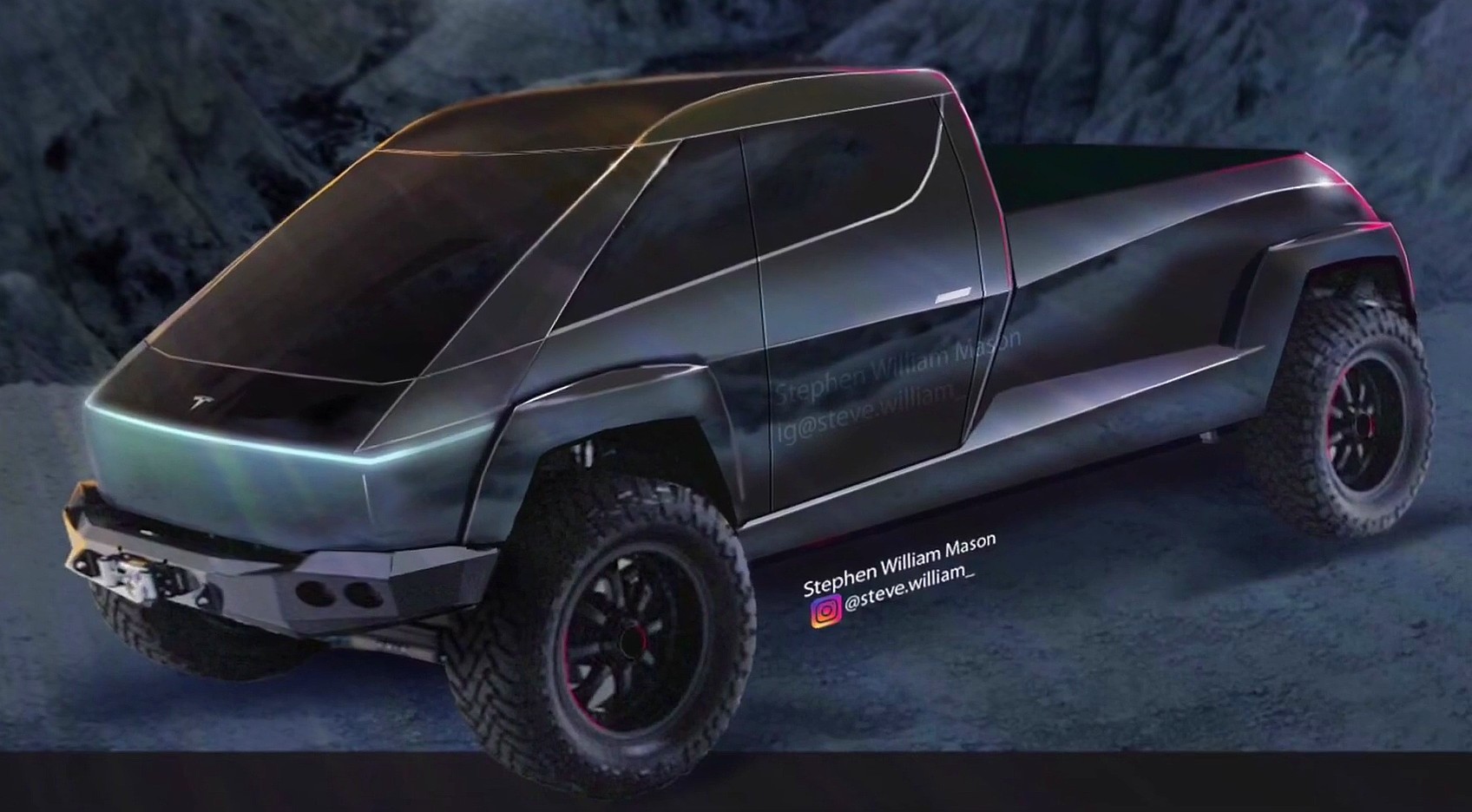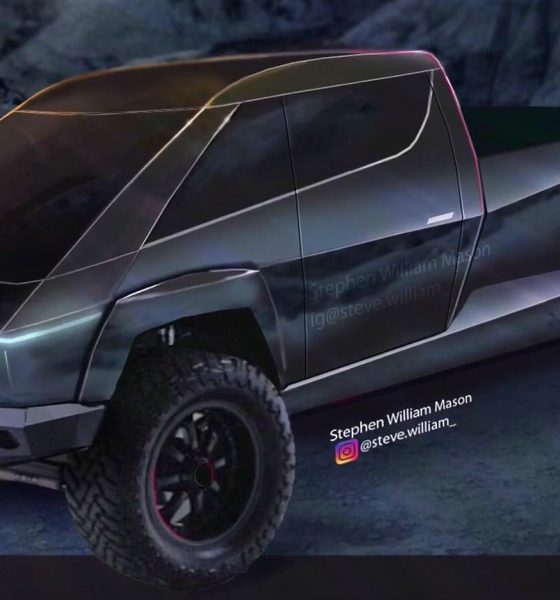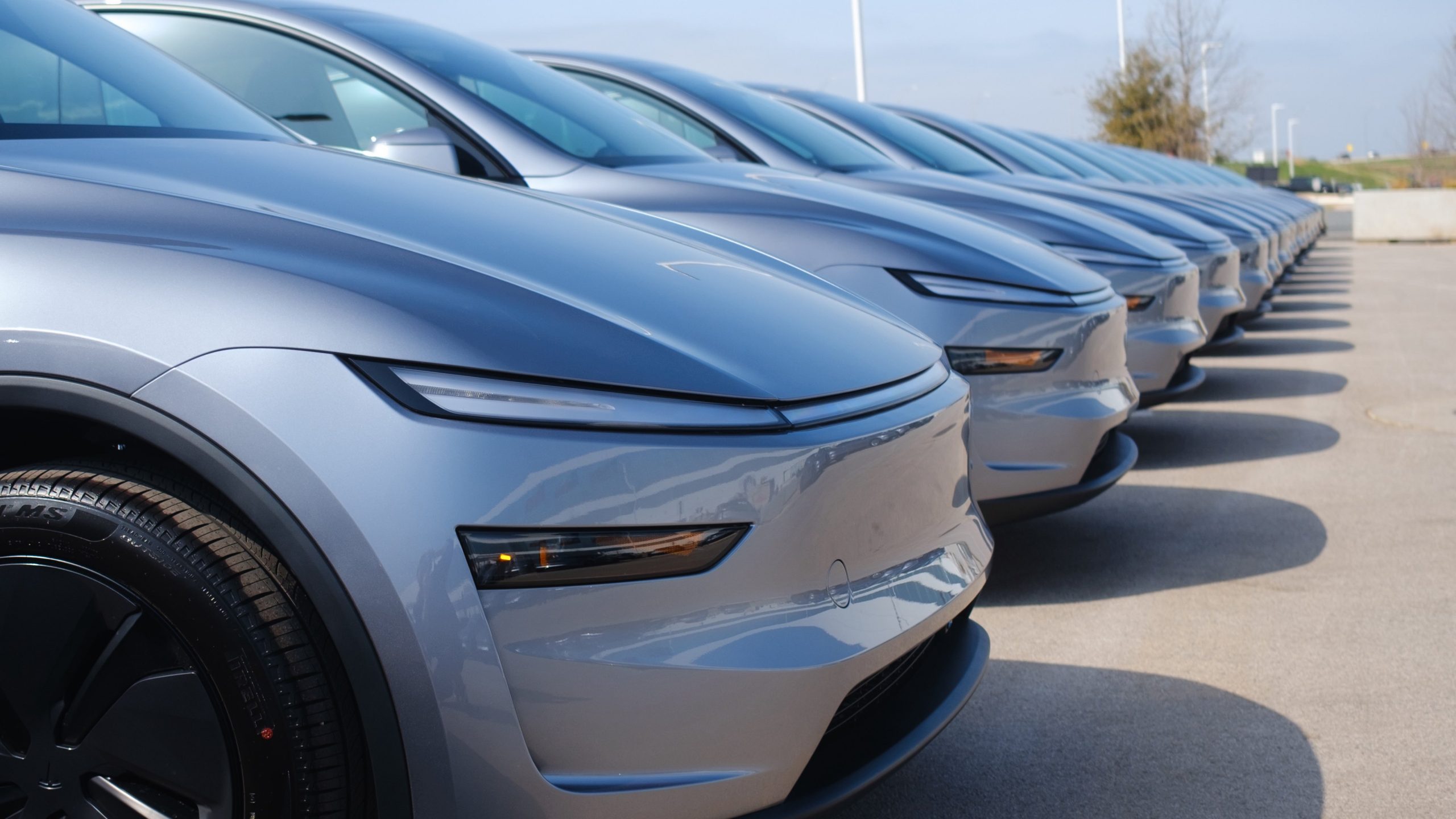

News
Tesla ‘Cyberpunk’ Pickup Truck predictions: Range, towing capacity, and more
Elon Musk’s “Cyberpunk” Tesla Pickup Truck is set to be unveiled this coming November, and the electric vehicle community could not be more excited. Musk, after all, has hyped the vehicle, hinting that it will start at a reasonable price of $49,000 and be the company’s “best product ever.” Tesla has been remarkably good at keeping the truck’s specs secret, which has all but encouraged the EV community to speculate about the upcoming features and specs of the highly-anticipated Tesla Pickup Truck.
Tesla owner-enthusiast Sean Mitchell recently shared his expectations for the upcoming vehicle, and while they are but speculations, they are rooted in information that the electric car maker and CEO Elon Musk have shared in the past. Other speculations are based on Tesla’s current technologies, as well as the company’s recent updates to its operations.
The Tesla Pickup Truck is meant to be a disruptor just like its predecessors like the Model 3 and the Model S. With this in mind, there is a good chance that Tesla will put its best technologies in the vehicle. Mitchell believes that the vehicle will have battery sizes between 150-200 kWh, which should give the truck a range of about 400 miles or more. This is something that Musk himself has mentioned in the past, with the CEO noting that the vehicle will have 400-500 miles of range per charge.
These figures might seem optimistic, but if one were to consider the innovations offered by Maxwell Technologies to Tesla, these specs would be more than plausible. Of course, being a new vehicle, the “Cyberpunk” truck will most definitely be capable of charging at 250 kW using the Supercharger V3 Network. This should allow the upcoming pickup to take advantage of Tesla’s fastest charging solution out of the box.
Since the Tesla Pickup Truck is meant to disrupt, the vehicle will most likely have an industry-leading towing capacity as well. Mitchell estimates that the vehicle will have a 20,000-30,000-lb towing capacity, on account of Elon Musk’s tendency to equip his electric cars with specs that far exceed those of ICE competitors. Seeing as Musk has previously joked that the vehicle could tow 300,000 lbs, a 30,000-lb towing capacity definitely seems feasible.
True to the Tesla brand, the Cybertruck will likely be very powerful as well. The Tesla owner-enthusiast noted that the Silicon Valley-based company will probably leapfrog the competition like Rivian when it comes to acceleration and horsepower; thus, it is possible for the truck to have a sub-3-second 0-60 mph time and about 800-1,000 hp. These specs exceed that of the well-received Rivian R1T all-electric pickup, which will likely beat the Tesla Truck to market.
Mitchell gave an excellent point when it came to the vehicle’s design. During the Tesla Semi’s unveiling, Musk mentioned that the electric car maker is developing a type of Armor Glass that is far more durable and far less prone to breaking. This should enable Tesla to use a generous amount of glass in the Cyberpunk truck’s design, allowing the company to equip the vehicle with a durable panoramic windshield. This does seem to be in line with Musk’s statements about the vehicle being a Blade Runner Cyberpunk truck that looks a bit like an armored personnel carrier from the future.
Watch Sean Mitchell’s recent take on the Tesla Pickup Truck in the video below.
What do you think about these speculations? Are they off base or close? Sound off in the comments below.

News
Tesla partners with Lemonade for new insurance program
Tesla recently was offered “almost free” coverage for Full Self-Driving by Lemonade’s Shai Wininger, President and Co-founder, who said it would be “happy to explore insuring Tesla FSD miles for (almost) free.”

Tesla owners in California, Oregon, and Arizona can now use Lemonade Insurance, the firm that recently said it could cover Full Self-Driving miles for “almost free.”
Lemonade, which offered the new service through its app, has three distinct advantages, it says:
- Direct Connection for no telematics device needed
- Better customer service
- Smarter pricing
The company is known for offering unique, fee-based insurance rates through AI, and instead of keeping unclaimed premiums, it offers coverage through a flat free upfront. The leftover funds are donated to charities by its policyholders.
On Thursday, it announced that cars in three states would be able to be connected directly to the car through its smartphone app, enabling easier access to insurance factors through telematics:
Lemonade customers who own @Tesla vehicles in California, Oregon, and Arizona can now connect their cars directly to the Lemonade app! ⚡🚘
Direct connection = no telematics device needed 📵
Better customer experience 💃
Smarter pricing with Lemonade 🧠This is a game-changer… pic.twitter.com/jbabxZWT4t
— Lemonade (@Lemonade_Inc) December 11, 2025
Tesla recently was offered “almost free” coverage for Full Self-Driving by Lemonade’s Shai Wininger, President and Co-founder, who said it would be “happy to explore insuring Tesla FSD miles for (almost) free.”
The strategy would be one of the most unique, as it would provide Tesla drivers with stable, accurate, and consistent insurance rates, while also incentivizing owners to utilize Full Self-Driving for their travel miles.
Tesla Full Self-Driving gets an offer to be insured for ‘almost free’
This would make FSD more cost-effective for owners and contribute to the company’s data collection efforts.
Data also backs Tesla Full Self-Driving’s advantages as a safety net for drivers. Recent figures indicate it was nine times less likely to be in an accident compared to the national average, registering an accident every 6.36 million miles. The NHTSA says a crash occurs approximately every 702,000 miles.
Tesla also offers its own in-house insurance program, which is currently offered in twelve states so far. The company is attempting to enter more areas of the U.S., with recent filings indicating the company wants to enter Florida and offer insurance to drivers in that state.
News
Tesla Model Y gets hefty discounts and more in final sales push

Tesla Model Y configurations are getting hefty discounts and more benefits as the company is in the phase of its final sales push for the year.
Tesla is offering up to $1,500 off new Model Y Standard trims that are available in inventory in the United States. Additionally, Tesla is giving up to $2,000 off the Premium trims of the Model Y. There is also one free upgrade included, such as a paint color or interior color, at no additional charge.
NEWS: Tesla is now offering discounts of up to $1,500 off new Model Y Standard vehicles in U.S. inventory. Discounts of up to $2,000 are also being offered on Model Y Premiums.
These discounts are in addition to the one free upgrade you get (such as Diamond Black paint) on… pic.twitter.com/L0RMtjmtK0
— Sawyer Merritt (@SawyerMerritt) December 10, 2025
Tesla is hoping to bolster a relatively strong performance through the first three quarters of the year, with over 1.2 million cars delivered through the first three quarters.
This is about four percent under what the company reported through the same time period last year, as it was about 75,000 vehicles ahead in 2024.
However, Q3 was the company’s best quarterly performance of all time, and it surged because of the loss of the $7,500 EV tax credit, which was eliminated in September. The imminent removal of the credit led to many buyers flocking to Tesla showrooms to take advantage of the discount, which led to a strong quarter for the company.
2024 was the first year in the 2020s when Tesla did not experience a year-over-year delivery growth, as it saw a 1 percent slide from 2023. The previous years saw huge growth, with the biggest coming from 2020 to 2021, when Tesla had an 87 percent delivery growth.
This year, it is expected to be a second consecutive slide, with a drop of potentially 8 percent, if it manages to deliver 1.65 million cars, which is where Grok projects the automaker to end up.
Tesla will likely return to its annual growth rate in the coming years, but the focus is becoming less about delivery figures and more about autonomy, a major contributor to the company’s valuation. As AI continues to become more refined, Tesla will apply these principles to its Full Self-Driving efforts, as well as the Optimus humanoid robot project.
Will Tesla thrive without the EV tax credit? Five reasons why they might
These discounts should help incentivize some buyers to pull the trigger on a vehicle before the year ends. It will also be interesting to see if the adjusted EV tax credit rules, which allowed deliveries to occur after the September 30 cutoff date, along with these discounts, will have a positive impact.
News
Tesla FSD’s newest model is coming, and it sounds like ‘the last big piece of the puzzle’
“There’s a model that’s an order of magnitude larger that will be deployed in January or February 2026.”

Tesla Full Self-Driving’s newest model is coming very soon, and from what it sounds like, it could be “the last big piece of the puzzle,” as CEO Elon Musk said in late November.
During the xAI Hackathon on Tuesday, Musk was available for a Q&A session, where he revealed some details about Robotaxi and Tesla’s plans for removing Robotaxi Safety Monitors, and some information on a future FSD model.
While he said Full Self-Driving’s unsupervised capability is “pretty much solved,” and confirmed it will remove Safety Monitors in the next three weeks, questions about the company’s ability to give this FSD version to current owners came to mind.
Musk said a new FSD model is coming in about a month or two that will be an order-of-magnitude larger and will include more reasoning and reinforcement learning.
He said:
“There’s a model that’s an order of magnitude larger that will be deployed in January or February 2026. We’re gonna add a lot of reasoning and RL (reinforcement learning). To get to serious scale, Tesla will probably need to build a giant chip fab. To have a few hundred gigawatts of AI chips per year, I don’t see that capability coming online fast enough, so we will probably have to build a fab.”
NEWS: Elon Musk says FSD Unsupervised is “pretty much solved at this point” and that @Tesla will be launching Robotaxis with no safety monitors in about 3 weeks in Austin, Texas. He also teased a new FSD model is coming in about 1-2 months.
“We’re just going through validation… https://t.co/Msne72cgMB pic.twitter.com/i3wfKX3Z0r
— Sawyer Merritt (@SawyerMerritt) December 10, 2025
It rings back to late November when Musk said that v14.3 “is where the last big piece of the puzzle finally lands.”
With the advancements made through Full Self-Driving v14 and v14.2, there seems to be a greater confidence in solving self-driving completely. Musk has also personally said that driver monitoring has been more relaxed, and looking at your phone won’t prompt as many alerts in the latest v14.2.1.
This is another indication that Tesla is getting closer to allowing people to take their eyes off the road completely.
Along with the Robotaxi program’s success, there is evidence that Tesla could be close to solving FSD. However, it is not perfect. We’ve had our own complaints with FSD, and although we feel it is the best ADAS on the market, it is not, in its current form, able to perform everything needed on roads.
But it is close.
That’s why there is some legitimate belief that Tesla could be releasing a version capable of no supervision in the coming months.
All we can say is, we’ll see.








